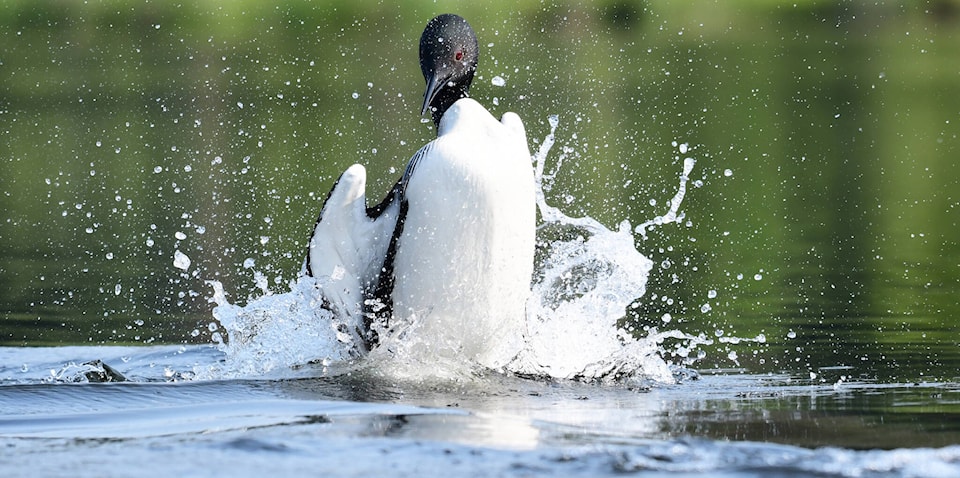One of the most iconic species of the wilderness is the Common Loon. Lucky for us Central Albertans, these magnificent birds are fairly common in our west-country lakes and ponds.
Earlier this month, we enjoyed a very special morning “loon” paddle at a small lake west of Caroline, complete with a ring-side seat watching a gathering of seven individuals.
Anyone who has spent time watching a pair of nesting loons will be familiar with their haunting calls as well as their basic behaviors, including bathing, occasionally rising out of the water to shake and stretch their wings, and their penchant for dipping their heads under the water surface. On this particular morning, not only did we hear/see all these classic behaviours, but we were also able to witness specific behaviours that are only exhibited when several loons gather together on the same water body in a “social gathering.”
Common Loon social gatherings, which generally occur in July and August, can range from being very peaceful to being very aggressive. All visitors are on the lake to gain information about the fitness of the breeding pair and to assess the desirability of the lake, with the intent of possibly taking it over for their own future nesting territory. Social gatherings typically include the nesting pair (which are trying to defend their territory) as well as two other cohorts. One cohort consists of nonbreeders (called floaters) that include individuals too young to settle (2–4-year-olds), individuals that are ready to breed (5–10-year-olds), and breeding birds that have been evicted from their own territories. The second cohort may be adults from nearby lakes which might join in on the social gathering in an attempt to entice floaters away from their own lake. Interestingly, the presence of chicks on a lake indicates prime breeding territory, so if a nesting pair has chicks, they hide them in the shoreline vegetation during “visitations” to make the lake appear less appealing.
I was able to photograph two less commonly observed behaviours:
Wing Rowing: While loons typically rely on their large, rear-placed feet for propulsion, when they need to get somewhere fast—usually after losing a territorial battle—they will noisily row themselves using their wings as paddles.
Penguin Dance: When rival birds get too close for comfort, one or more individuals will rear up in the water, usually with wings spread, and rapidly paddle along the surface of the water with their feet. This behaviour may also be elicited if humans get too close, so it is important to always keep a respectful distance away from loons (and other wildlife!).
Now is a great time to get in a canoe or kayak and head out to a west-country lake to enjoy the loons!
Myrna Pearman is a biologist, nature writer, photographer and author of several books. Her books are available at www.myrnapearman.com. She can be reached at myrna@myrnapearman.com
